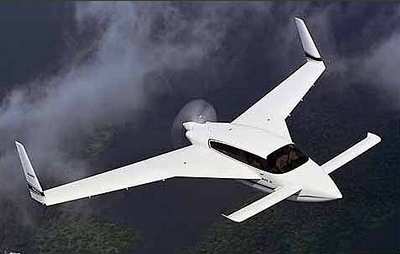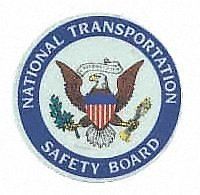Area Pilots Reach Out To Educate Public About Experimental
Planes
by ANN Senior E-Media Producer Paul Plack
 In the wake of deadly back-to-back light airplane crashes into
residences near North Las Vegas Airport (KVGT) in Nevada last
month, and subsequent comments from the county's aviation authority
about banning operation of experimental aircraft there, a group of
pilots has come together to form a public outreach.
In the wake of deadly back-to-back light airplane crashes into
residences near North Las Vegas Airport (KVGT) in Nevada last
month, and subsequent comments from the county's aviation authority
about banning operation of experimental aircraft there, a group of
pilots has come together to form a public outreach.
KTNV-TV reports that last Thursday night, a local pilot group
calling itself the Clark County Aviation Association hosted a
meeting to gather and answer questions from the public. The
complaint prompting the most heated discussion turned out to be not
experimental operations, but low-altitude flight.
You might think the heat is off experimental aircraft. You'd be
wrong.
Following the August 22 crash of an experimental Velocity
173RG at North Las Vegas, it was widely reported in
the general media that the aircraft had been built in 2002 and, in
a wide variation of layman's terms, had been "certified."
But the NTSB's preliminary report reveals the aircraft, while
registered in 2002, just got its airworthiness certificate on March
9 of this year, and there were only 5.1 hours logged at the time of
the accident, which claimed the lives of the pilot and two
residents of the home struck by the plane. If official reports are
accurate, the aircraft was not being flown within its operating
limitations.
Normally, a new aircraft awarded an Experimental Amateur Built
airworthiness certificate is assigned a designated test area over
which to conduct its initial phase of flight testing. A sparsely
populated area is normally chosen, but an FAA inspector or
Designated Airworthiness Examiner (DAR) has latitude to allow
limited access to an airport in a more densely populated area if
necessary for reasonable access to maintenance, fuel, or other
needed amenities. The period covered is normally the aircraft's
first 40 flight hours, but is typically reduced to 25 hours if the
aircraft is equipped with a certificated powerplant and
propeller.

In the case of N415MK, the Velocity involved in the August 24
accident at North Las Vegas, the powerplant was a certificated
Lycoming IO-360-C1C engine, equipped with a certificated MT
MTV-18-B electric, constant-speed propeller. The engine was
equipped with a supercharger, a deviation from its certificated
form, yet the aircraft's operating limitations had been written for
the more lenient, 25-hour Phase I test period. The NTSB's
preliminary accident report did not specify whether the
supercharger was added after the airworthiness inspection, but the
builder noted to an investigator that
the accident flight was the first following the
modification.
The NTSB preliminary reports found the operating limitations for
the aircraft were written as follows:
 "After a minimum time of (5) hours, and after controllability,
airworthiness, and safety checks required by FAR 90.319(b) and
chapter 4 of Advisory Circular 90.89A are established and recorded
in the airplane logbook the airplane then may complete the
remaining hours required in Phase 1 while based at North Las Vegas
Airport (VGT); OR, a one time flight to the "Airplane Base of
Operations" may also be conducted remaining clear of all densely
populated areas and congested airways. NOTE: Airplane Base of
Operations: Show Low Regional Airport (KSOW). This airplane must be
operated for at least 25 (Twenty Five) hours in the assigned
geographic areas"
"After a minimum time of (5) hours, and after controllability,
airworthiness, and safety checks required by FAR 90.319(b) and
chapter 4 of Advisory Circular 90.89A are established and recorded
in the airplane logbook the airplane then may complete the
remaining hours required in Phase 1 while based at North Las Vegas
Airport (VGT); OR, a one time flight to the "Airplane Base of
Operations" may also be conducted remaining clear of all densely
populated areas and congested airways. NOTE: Airplane Base of
Operations: Show Low Regional Airport (KSOW). This airplane must be
operated for at least 25 (Twenty Five) hours in the assigned
geographic areas"
The plane's maintenance logbook had the required notation, made
at 5.1 hours, leaving at least another 19.9 hours, and another
logbook entry, to be completed before the plane could legally be
used for pattern work at North Las Vegas.
The pilot for the accident flight was 76-year-old Mack Creekmore
Murphree Jr., of Dayton, NV an experienced pilot, mechanic and
engineer with an ATP rating and 6,250 hours. We may never know
whether he made himself aware of the operating limitations against
remaining near the airport, or over populated areas. When
contacting the tower, Murphree said he'd be staying in the
pattern.
When a tower controller noticed the plane was not climbing, he
radioed Murphree to ask if the pilot needed assistance. After a
pause, Murphree responded four times, with understandable tension
in his voice, saying simply, "Going in!"
The NTSB's probable cause report can be expected in about a
year... but it's hard to imagine local airport opponents will
wait for it. Even Clark County Aviation Director Randy Walker has
called for a ban on flights by experimental aircraft at KVGT.
 ANN's Daily Aero-Linx (05.06.25)
ANN's Daily Aero-Linx (05.06.25) ANN's Daily Aero-Term (05.06.25): Ultrahigh Frequency (UHF)
ANN's Daily Aero-Term (05.06.25): Ultrahigh Frequency (UHF) ANN FAQ: Q&A 101
ANN FAQ: Q&A 101 Classic Aero-TV: Virtual Reality Painting--PPG Leverages Technology for Training
Classic Aero-TV: Virtual Reality Painting--PPG Leverages Technology for Training Airborne 05.02.25: Joby Crewed Milestone, Diamond Club, Canadian Pilot Insurance
Airborne 05.02.25: Joby Crewed Milestone, Diamond Club, Canadian Pilot Insurance





